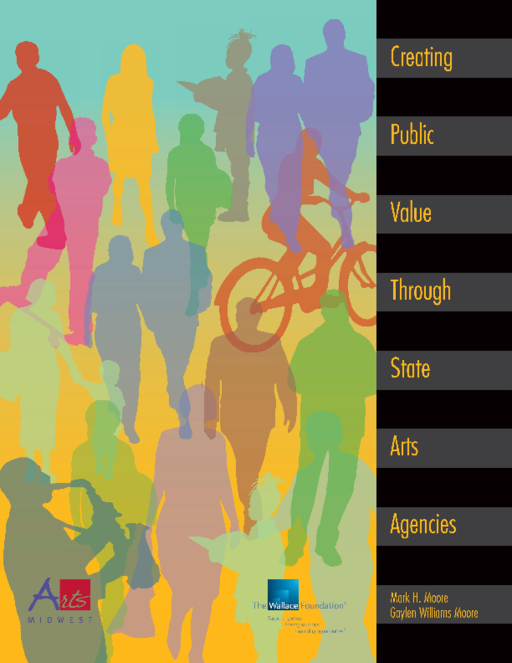Breadcrumb
- Wallace
- Reports
- Creating Public Value Through St...
Creating Public Value Through State Arts Agencies

- Author(s)
- Mark H. Moore and Gaylen Williams Moore
- Publisher(s)
- Arts Midwest
- DOI Link
- https://doi.org/10.59656/A-G4352.001
Summary
How we did this
This report captures lessons learned from a set of management development programs for teams from the 13 states that had been awarded grants through The Wallace Foundation’s State Arts Partnerships for Cultural Participation initiative, or START.
An array of different public causes compete for limited resources. Among these causes are the arts. What does this mean for state arts agencies, or SAAs? How can they ensure that their efforts are understood and get the hearing and resources they deserve?
This report offers guidance on that. It looks specifically at how SAAs can accomplish three key tasks:
- Set realistic goals
- Measure and communicate the public value of their work
- Cultivate support from policymakers
The report offers a framework for SAA leaders to develop a strategy for guiding SAA operations and completing these tasks well. The goal is to ensure that resources are used as efficiently and effectively as possible to contribute to the public.
The report outlines three distinct issues public managers must address to develop a strategic vision:
- The public value they seek to produce for individuals and communities
- The sources of legitimacy and support they can rely on to provide the authorization and resources to purse that vision
- The location and character of the operational capacity needed to achieve their goals
The authors depict this trio as a triangle. It is drawn in a way to remind public managers that they are solving a puzzle. The solutions to one problem in the triangle have to “fit”with the solutions to the other parts of the strategic triangle.
The report emerged from a Wallace Foundation effort that provided grants to 13 SAAs to develop ways to build participation in the arts. The effort was known as START, short for State Arts Partnerships for Cultural Participation. As part of the effort, teams from the 13 agencies took part in a series of management development programs. This report captures lessons from this series. The report’s co-author is Mark H. Moore, a Harvard scholar of public management who helped lead the series. The idea of the strategic triangle is based on his theory of public value, described in his book Creating Public Value: Strategic Management in Government.
The report is aimed at those who lead or manage SAAs. It could also be helpful to those who:
- Oversee SAAs
- Advocate for the arts in civic or political arenas
- Work with SAAs on arts participation efforts
- Provide technical assistance to SAAs or other kinds of arts organizations

[S]ociety needs those who lead state arts agencies to have the courage, imagination, and commitments of artists.
— Mark H. Moore and Gaylen Williams Moore
Related reports on state arts agencies and policy are:
- State Arts Agencies 1965-2003: Whose Interests to Serve?
- Cultivating Demand for the Arts: Arts Learning, Arts Engagement, and State Arts Policy
- The Arts and State Governments: At Arm's Length or Arm in Arm?
- State Arts Policy: Trends and Future Prospects
- From START to Finish: Lessons From The Wallace Foundation’s Work With State Arts Agencies
Key Takeaways
Public managers must address three distinct issues in developing a strategic vision:
- The public value they seek to produce for individuals and communities
- The sources of legitimacy and support they can rely on to provide the authorization and resources to purse that vision
- The location and character of the operational capacity needed to achieve their goals
Visualizations


